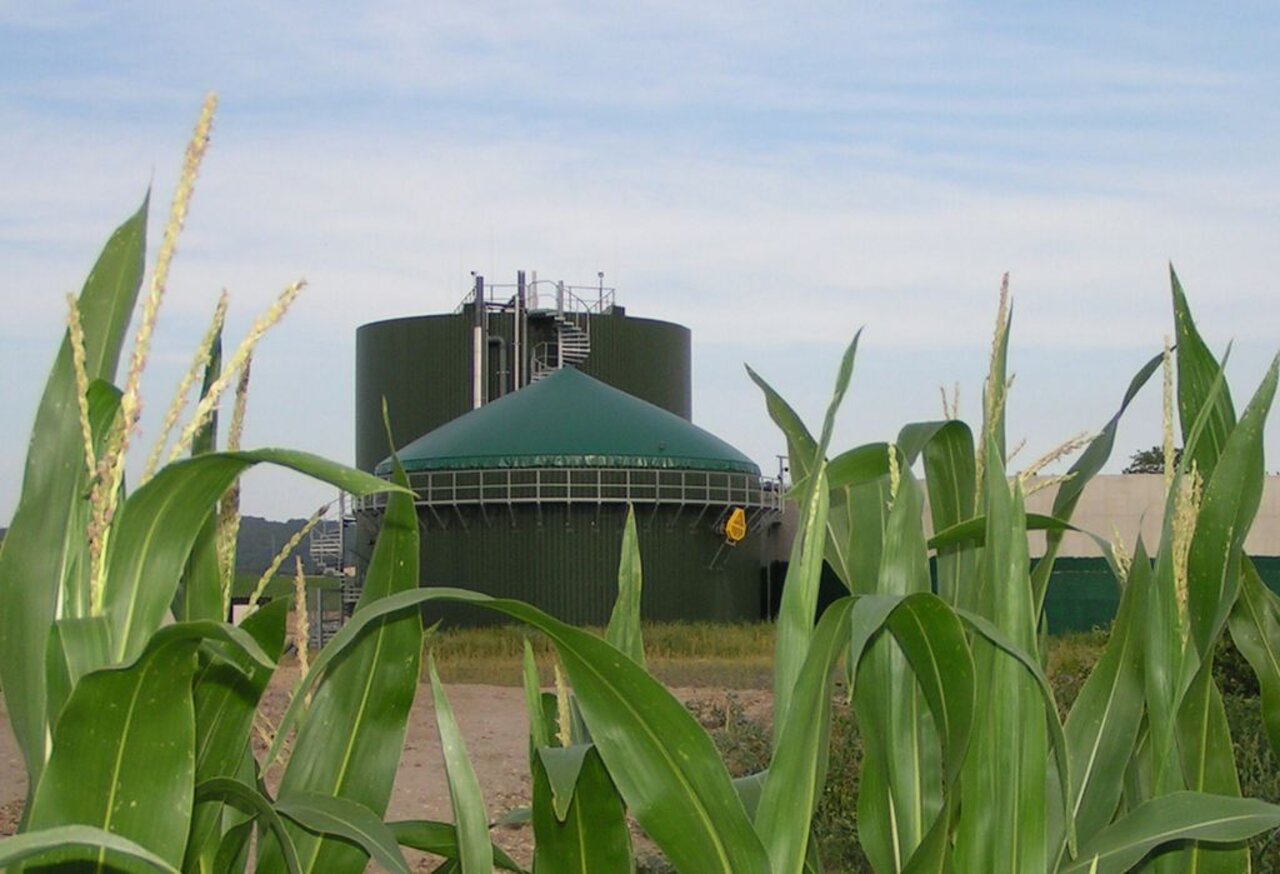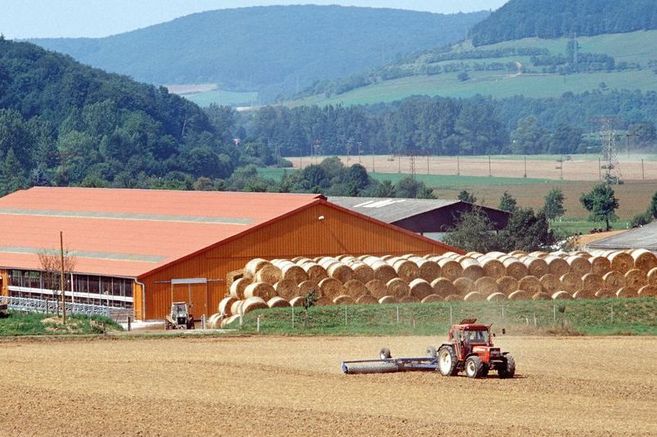Project
Greenhouse Gas Emissions and Reduction Strategies in Germany: Analyses at Farm Level

Modeling of greenhouse gas mitigation strategies in Germany
What contribution can agriculture make to climate protection and what are the costs for the farms when implementing an adaptation strategy? With a model-based analysis conducted with the farm group model FARMIS, we analyse and evaluate the effects of possible greenhouse gas (GHG) mitigation strategies.
Background and Objective
Agricultural production leads to the emission of climate-damaging gases, which are becoming more and more the focus of climate policy within the framework of the current UN Climate Conference and the Federal Government's ambitious climate protection targets. For the first time, the National Climate Protection Plan for 2050 addresses agriculture as a field of action and defines sectoral reduction targets for 2030 (BMUB 2016). Because of the numerous small, diffuse GHG-sources, suitable and cost-effective GHG-mitigation measures are dependent on the various individual farm structures and processes. Accordingly, the development of GHG-mitigation measures requires approaches on farm level, which will be investigated in the present project.
The objective of the project is therefore to further develop the FARMIS farm group model methodologically in order to analyze the ecological and economic effects of GHG-mitigation strategies at the farm level.
Approach
For this purpose, the calculation of greenhouse gas emissions in FARMIS is based on the national GHG assessment method according to Rösemann et al. (2017). In addition, selected policy instruments (such as quotas, taxes or an N-surplus-levy) will be implemented in order to analyze their potential for an effective and efficient GHG-mitigation in the agricultural sector.
The project is based particularly on information from the national Farm Account Data Network (FADN). Additionally, data from the Association for Technology and Structures in Agriculture eV (KTBL) are used to categorize crop-based process alternatives according to production intensities. Furthermore, maps of the Federal Institute for Geosciences and Natural Resources (BGR) are blended with municipal boundaries of the federal and state statistical offices in order to determine the relative share of the land use type "drained organic soils" in the farm groups.
In addition to the analysis of GHG-emissions from the reference scenario (Thünen-Baseline according to Offermann et al. (2016)), these methodological extensions allow for the investigation of the suitability and relevance of alternative GHG-mitigation strategies relating to income, production and GHG-emissions, with particular regard to adaption strategies on farm level.
Results
The model calculations show that the introduction of a direct CO2eq-emissions tax causes regional and operational adjustment reactions of varying intensity depending on the tax level. Especially in the moor-rich federal states of Mecklenburg-Western Pomerania and Brandenburg, a high level of GHG avoidance can be achieved even with low GHG taxation. On the other hand, regions in federal states with high livestock density, such as Schleswig-Holstein and Lower Saxony, which are characterized by considerable land restraints (e.g. as a result of area requirements for disposing organic fertilizer due to high livestock densities), only achieve greater GHG avoidance efforts at higher taxation rates. The avoidance performance is mainly achieved by fully rewetting drained organic grass-lands, which are thus removed from agricultural production. This leads to a shortage of extensive production areas, which essentially influences the farm organization of forage farms. In addition, due to the shortage of organic grassland in some regions, there is an increasing demand for - and also intensification of - the remaining mineral areas of grassland, which increases agricultural holdings’ leasing expenditures.
Imposing a levy on N surpluses greater than 60 kg N/ha, which takes into account both mineral and organic N sources, leads to a farm adaptation, especially of production methods with high N surpluses. The production processes affected include mainly the cultivation of energy maize. Its nitrogen content from fertilisation is not removed from the system via plant removal, but is returned to the field after fermentation. In addition, the high nitrogen content in poultry manure and dry faeces from poultry farming lead to high levies on mixed and processing farms. The N-surplus levy causes a loss of economic viability in pig and poultry farms with very high N-surplus rates. Here, the model results only reflect the short-term adjustment measures that would be expected under an N-surplus taxation. In the long run, an operational adjustment reaction to the comparably strong economic effects of N-surplus taxation would mean the termination of business operations. The GHG reduction target of 6.2 million tonnes of CO2eq-emissions can only be achieved at very high costs with this policy instrument.
The results illustrate the importance of the target-oriented consideration of the agricultural sector in national climate protection policy. The calculations show that the costs of achieving the GHG reduction target and the distribution of costs among the affected types of farming differ significantly between GHG reduction policies. The definition of the system boundaries and their consideration in setting reduction targets and instruments is of considerable importance. A sectoral GHG reduction target for the agricultural sector can only be achieved at very high costs when delimited according to the conventional UNFCCC system. The extension of the system boundary to include emissions from almost all resources used by agriculture is not only appropriate, but also absolutely necessary for a cost-efficient development of agricultural GHG reduction potentials, since this increases the spectrum of adaptation measures and increases the flexibility of farms to select cost-effective reduction measures. The quantitative analysis shows the high extent of these cost advantages, especially with regard to GHG abatement from organic soils.
Thünen-Contact

Duration
5.2017 - 9.2019
More Information
Project status:
finished
Publications to the project
- 0
Braun J (2020) Weiterentwicklung eines sektorkonsistenten Betriebsgruppenmodells um Treibhausgasemissionen und Bewertung von ausgewählten Minderungsstrategien. Aachen: Shaker, 190 p, Berlin, Humboldt-Univ, Diss, 2019, Berliner Schr Agrar Umweltökonomik 23
- 1
Osterburg B, Heidecke C, Bolte A, Braun J, Dieter M, Dunger K, Elsasser P, Fischer R, Flessa H, Fuß R, Günter S, Jacobs A, Offermann F, Rock J, Rösemann C, Rüter S, Schmidt TG, Schröder J-M, Schweinle J, Tiemeyer B, Weimar H, Welling J, Witte T de (2019) Folgenabschätzung für Maßnahmenoptionen im Bereich Landwirtschaft und landwirtschaftliche Landnutzung, Forstwirtschaft und Holznutzung zur Umsetzung des Klimaschutzplans 2050. Braunschweig: Johann Heinrich von Thünen-Institut, 150 p, Thünen Working Paper 137, DOI:10.3220/WP1576590038000
- 2
Rösemann C, Haenel H-D, Dämmgen U, Freibauer A, Döring U, Wulf S, Eurich-Menden B, Döhler H, Schreiner C, Osterburg B (2017) Calculations of gaseous and particulate emissions from German agriculture 1990 - 2015 : report on methods and data (RMD) submission 2017. Braunschweig: Johann Heinrich von Thünen-Institut, 424 p, Thünen Rep 46, DOI:10.3220/REP1490877117000
- 3
Offermann F, Banse M, Deblitz C, Gocht A, González Mellado AA, Kreins P, Marquardt S, Osterburg B, Pelikan J, Rösemann C, Salamon P, Sanders J (2016) Thünen-Baseline 2015-2025: Agrarökonomische Projektionen für Deutschland. Braunschweig: Johann Heinrich von Thünen-Institut, 116 p, Thünen Rep 40, DOI:10.3220/REP1458557428000








